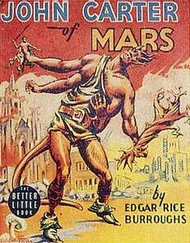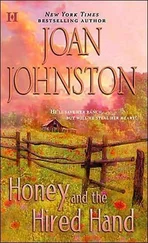Andrew Lang - John Knox and the Reformation
Здесь есть возможность читать онлайн «Andrew Lang - John Knox and the Reformation» — ознакомительный отрывок электронной книги совершенно бесплатно, а после прочтения отрывка купить полную версию. В некоторых случаях можно слушать аудио, скачать через торрент в формате fb2 и присутствует краткое содержание. Жанр: foreign_antique, foreign_prose, на английском языке. Описание произведения, (предисловие) а так же отзывы посетителей доступны на портале библиотеки ЛибКат.
- Название:John Knox and the Reformation
- Автор:
- Жанр:
- Год:неизвестен
- ISBN:нет данных
- Рейтинг книги:4 / 5. Голосов: 1
-
Избранное:Добавить в избранное
- Отзывы:
-
Ваша оценка:
- 80
- 1
- 2
- 3
- 4
- 5
John Knox and the Reformation: краткое содержание, описание и аннотация
Предлагаем к чтению аннотацию, описание, краткое содержание или предисловие (зависит от того, что написал сам автор книги «John Knox and the Reformation»). Если вы не нашли необходимую информацию о книге — напишите в комментариях, мы постараемся отыскать её.
John Knox and the Reformation — читать онлайн ознакомительный отрывок
Ниже представлен текст книги, разбитый по страницам. Система сохранения места последней прочитанной страницы, позволяет с удобством читать онлайн бесплатно книгу «John Knox and the Reformation», без необходимости каждый раз заново искать на чём Вы остановились. Поставьте закладку, и сможете в любой момент перейти на страницу, на которой закончили чтение.
Интервал:
Закладка:
Andrew Lang
John Knox and the Reformation
In this brief Life of Knox I have tried, as much as I may, to get behind Tradition, which has so deeply affected even modern histories of the Scottish Reformation, and even recent Biographies of the Reformer. The tradition is based, to a great extent, on Knox’s own “History,” which I am therefore obliged to criticise as carefully as I can. In his valuable John Knox , a Biography , Professor Hume Brown says that in the “History” “we have convincing proof alike of the writer’s good faith, and of his perception of the conditions of historic truth.” My reasons for dissenting from this favourable view will be found in the following pages. If I am right, if Knox, both as a politician and an historian, resembled Charles I. in “sailing as near the wind” as he could, the circumstance (as another of his biographers remarks) “only makes him more human and interesting.”
Opinion about Knox and the religious Revolution in which he took so great a part, has passed through several variations in the last century. In the Edinburgh Review of 1816 (No. liii. pp. 163-180), is an article with which the present biographer can agree. Several passages from Knox’s works are cited, and the reader is expected to be “shocked at their principles.” They are certainly shocking, but they are not, as a rule, set before the public by biographers of the Reformer.
Mr. Carlyle introduced a style of thinking about Knox which may be called platonically Puritan. Sweet enthusiasts glide swiftly over all in the Reformer that is specially distasteful to us. I find myself more in harmony with the outspoken Hallam, Dr. Joseph Robertson, David Hume, and the Edinburgh reviewer of 1816, than with several more recent students of Knox.
“The Reformer’s violent counsels and intemperate speech were remarkable,” writes Dr. Robertson, “even in his own ruthless age,” and he gives fourteen examples. 1 1 Inventories of Mary, Queen of Scots, p. cxxii., note 7.
“Lord Hailes has shown,” he adds, “how little Knox’s statements” (in his “History”) “are to be relied on even in matters which were within the Reformer’s own knowledge.” In Scotland there has always been the party of Cavalier and White Rose sentimentalism. To this party Queen Mary is a saintly being, and their admiration of Claverhouse goes far beyond that entertained by Sir Walter Scott. On the other side, there is the party, equally sentimental, which musters under the banner of the Covenant, and sees scarcely a blemish in Knox. A pretty sample of the sentiment of this party appears in a biography (1905) of the Reformer by a minister of the Gospel. Knox summoned the organised brethren, in 1563, to overawe justice, when some men were to be tried on a charge of invading in arms the chapel of Holyrood. No proceeding could be more anarchic than Knox’s, or more in accordance with the lovable customs of my dear country, at that time. But the biographer of 1905, “a placed minister,” writes that “the doing of it” (Knox’s summons) “was only an assertion of the liberty of the Church, and of the members of the Commonwealth as a whole, to assemble for purposes which were clearly lawful” – the purposes being to overawe justice in the course of a trial!
On sentiment, Cavalier or Puritan, reason is thrown away.
I have been surprised to find how completely a study of Knox’s own works corroborates the views of Dr. Robertson and Lord Hailes. That Knox ran so very far ahead of the Genevan pontiffs of his age in violence; and that in his “History” he needs such careful watching, was, to me, an unexpected discovery. He may have been “an old Hebrew prophet,” as Mr. Carlyle says, but he had also been a young Scottish notary! A Hebrew prophet is, at best, a dangerous anachronism in a delicate crisis of the Church Christian; and the notarial element is too conspicuous in some passages of Knox’s “History.”
That Knox was a great man; a disinterested man; in his regard for the poor a truly Christian man; as a shepherd of Calvinistic souls a man fervent and considerate; of pure life; in friendship loyal; by jealousy untainted; in private character genial and amiable, I am entirely convinced. In public and political life he was much less admirable; and his “History,” vivacious as it is, must be studied as the work of an old-fashioned advocate rather than as the summing up of a judge. His favourite adjectives are “bloody,” “beastly,” “rotten,” and “stinking.”
Any inaccuracies of my own which may have escaped my correction will be dwelt on, by enthusiasts for the Prophet, as if they are the main elements of this book, and disqualify me as a critic of Knox’s “History.” At least any such errors on my part are involuntary and unconscious. In Knox’s defence we must remember that he never saw his “History” in print. But he kept it by him for many years, obviously re-reading, for he certainly retouched it, as late as 1571.
In quoting Knox and his contemporaries, I have used modern spelling: the letter from the State Papers printed on pp. 146, 147, shows what the orthography of the period was really like. Consultation of the original MSS. on doubtful points, proves that the printed Calendars, though excellent guides, cannot be relied on as authorities.
The portrait of Knox, from Beza’s book of portraits of Reformers, is posthumous, but is probably a good likeness drawn from memory, after a description by Peter Young, who knew him, and a design, presumably by “Adrianc Vaensoun,” a Fleming, resident in Edinburgh. 2 2 Hume Brown, John Knox , ii. 320-324.
There is an interesting portrait, possibly of Knox, in the National Gallery of Portraits, but the work has no known authentic history.
The portrait of Queen Mary, at the age of thirty-six, and a prisoner, is from the Earl of Morton’s original; it is greatly superior to the “Sheffield” type of likenesses, of about 1578; and, with Janet’s and other drawings (1558-1561), the Bridal medal of 1558, and (in my opinion) the Earl of Leven and Melville’s portrait, of about 1560-1565, is the best extant representation of the Queen.
The Leven and Melville portrait of Mary, young and charming, and wearing jewels which are found recorded in her Inventories, has hitherto been overlooked. An admirable photogravure is given in Mr. J. J. Foster’s “True Portraiture of Mary, Queen of Scots” (1905), and I understand that a photograph was done in 1866 for the South Kensington Museum.
A. LANG.
8 Gibson Place, St. Andrews.
CHAPTER I: ANCESTRY, BIRTH, EDUCATION, ENVIRONMENT: 1513(?) -1546
“ November 24, 1572.
“John Knox, minister, deceased, who had, as was alleged, the most part of the blame of all the sorrows of Scotland since the slaughter of the late Cardinal.”
It is thus that the decent burgess who, in 1572, kept The Diurnal of such daily events as he deemed important, cautiously records the death of the great Scottish Reformer. The sorrows, the “cumber” of which Knox was “alleged” to bear the blame, did not end with his death. They persisted in the conspiracies and rebellions of the earlier years of James VI.; they smouldered through the later part of his time; they broke into far spreading flame at the touch of the Covenant; they blazed at “dark Worcester and bloody Dunbar”; at Preston fight, and the sack of Dundee by Monk; they included the Cromwellian conquest of Scotland, and the shame and misery of the Restoration; to trace them down to our own age would be invidious.
It is with the “alleged” author of the Sorrows, with his life, works, and ideas that we are concerned.
Читать дальшеИнтервал:
Закладка:
Похожие книги на «John Knox and the Reformation»
Представляем Вашему вниманию похожие книги на «John Knox and the Reformation» списком для выбора. Мы отобрали схожую по названию и смыслу литературу в надежде предоставить читателям больше вариантов отыскать новые, интересные, ещё непрочитанные произведения.
Обсуждение, отзывы о книге «John Knox and the Reformation» и просто собственные мнения читателей. Оставьте ваши комментарии, напишите, что Вы думаете о произведении, его смысле или главных героях. Укажите что конкретно понравилось, а что нет, и почему Вы так считаете.











